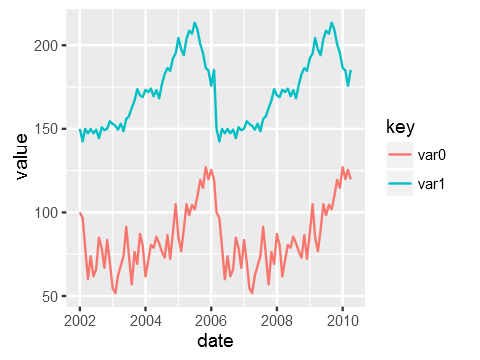A very newbish question, but say I have data like this:
test_data <-
data.frame(
var0 = 100 + c(0, cumsum(runif(49, -20, 20))),
var1 = 150 + c(0, cumsum(runif(49, -10, 10))),
date = seq(as.Date("2002-01-01"), by="1 month", length.out=100)
)
How can I plot both time series var0 and var1 on the same graph, with date on the x-axis, using ggplot2? Bonus points if you make var0 and var1 different colours, and can include a legend!
I'm sure this is very simple, but I can't find any examples out there.




colour=as the variable name. – Affenpinscher